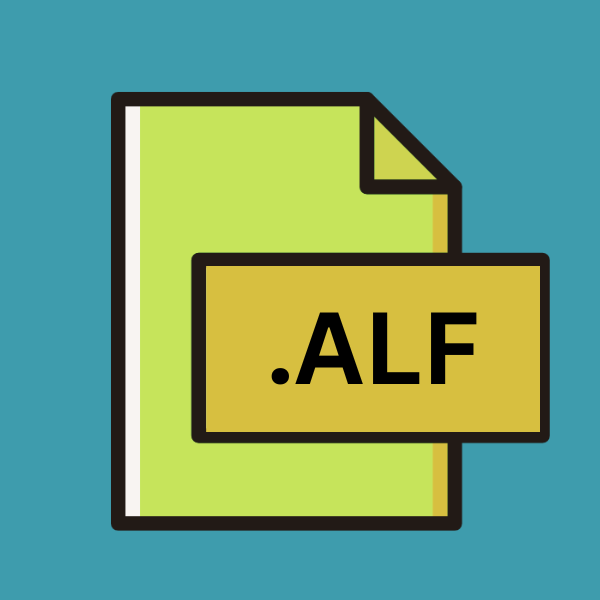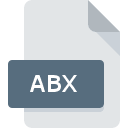.ALF File Extension

ACT! Lookup File
| Developer | The Sage Group |
| Popularity | |
| Category | Database Files |
| Format | .ALF |
| Cross Platform | Update Soon |
What is an ALF file?
The .ALF file extension is associated with the Advanced List Formatter (ALF) format. ALF files are primarily used for storing structured data in a format that can be easily manipulated and formatted for display purposes.
These files commonly contain tabular data, such as lists, tables, or databases, along with formatting instructions to dictate how the data should be presented.
More Information.
The history of the .ALF file extension traces back to the early days of computing when there was a growing need for structured data representation.
As software applications became more sophisticated, developers sought ways to present data in a manner that was not only informative but also aesthetically pleasing.
The initial purpose of .ALF files were to streamline the process of formatting and presenting structured data within software applications.
By encapsulating both the data and its formatting instructions within a single file, developers could achieve greater flexibility and control over how the data was displayed to end-users.
Origin Of This File.
The .ALF file format originated in the realm of computer programming, particularly within applications where formatted data output is essential.
It was developed to provide a standardized way of storing structured data along with formatting directives, enabling developers to create more visually appealing and user-friendly interfaces for their software applications.
File Structure Technical Specification.
ALF files typically consist of two main components: the data section and the formatting section:
- Data Section: This section contains the actual structured data, which could be in the form of lists, tables, or other tabular formats. The data is usually stored in a human-readable format, making it easy to interpret and manipulate.
- Formatting Section: The formatting section contains instructions on how the data should be formatted and presented. This may include specifications for fonts, colors, alignment, column widths, and other stylistic elements.
How to Convert the File?
Converting .ALF files to other formats may be necessary to make them compatible with a wider range of software applications.
While direct conversion tools for .ALF files may be limited, it is possible to convert the data contained within these files to more common formats such as CSV (Comma-Separated Values) or XLS (Microsoft Excel Spreadsheet). To convert an .ALF file to CSV or XLS:
- Open the .ALF file: Use a text editor or an appropriate software application to open the .ALF file.
- Copy the Data: Select and copy the structured data from the .ALF file.
- Paste into a Spreadsheet: Open a spreadsheet application such as Microsoft Excel or Google Sheets and paste the copied data into a new document.
- Save in Desired Format: Once the data is pasted into the spreadsheet, you can then save the document in the desired format, such as CSV or XLS.
Advantages And Disadvantages.
Advantage:
- Structured Data Representation: ALF files provide a structured way of representing data, making it easier to organize and manipulate information.
- Formatting Flexibility: With the inclusion of formatting instructions, ALF files offer developers greater control over how data is presented to users.
- Portability: ALF files can be easily transferred between different software applications and platforms without losing their structure or formatting.
Disadvantage:
- Limited Adoption: The .ALF file format is not as widely adopted as other formats, which may limit its compatibility with certain software applications.
- Complexity: Creating and manipulating ALF files may require a certain level of technical expertise, particularly when dealing with complex formatting requirements.
How to Open ALF?
Open In Windows
- Notepad: The built-in Notepad application in Windows can be used to open and view .ALF files. Simply right-click on the .ALF file, select “Open with,” and choose Notepad from the list of available applications.
- Microsoft Excel: If the .ALF file contains tabular data, you can open it in Microsoft Excel by double-clicking on the file. Excel will automatically recognize the tabular structure and display the data accordingly.
Open In Linux
- Gedit: Gedit is a popular text editor for Linux systems and can be used to open .ALF files. You can open Gedit from the application menu, then go to File > Open and select the .ALF file you wish to view.
- LibreOffice Calc: LibreOffice Calc, a part of the LibreOffice suite, can be used to open .ALF files with tabular data on Linux. Launch LibreOffice Calc, then go to File > Open and navigate to the location of the .ALF file.
Open In MAC
- TextEdit: TextEdit, the default text editor on macOS, can be used to open .ALF files. Simply double-click on the .ALF file, and it should open in TextEdit. Alternatively, you can right-click on the file, select “Open With,” and choose TextEdit from the list.
- Microsoft Excel for Mac: If the .ALF file contains tabular data, you can open it in Microsoft Excel for Mac. Double-click on the file, and Excel will automatically recognize the tabular structure and display the data accordingly.
Open In Android
Text Editor Apps: There are several text editor apps available on the Google Play Store for Android devices, such as Jota Text Editor or QuickEdit Text Editor. You can use any of these apps to open and view .ALF files on your Android device.
Open In IOS
Text Editor Apps: Similar to Android, you can use text editor apps available on the App Store for iOS devices to open and view .ALF files. Apps like Textastic Code Editor or Documents by Readdle can handle .ALF files on iOS.
Open in Others
Online Converters: If you’re unable to open .ALF files using the methods mentioned above, you can use online file conversion services like Zamzar or Online-Convert to convert .ALF files to a more common format that is compatible with your system. Simply upload the .ALF file to the converter, choose your desired output format, and download the converted file.













